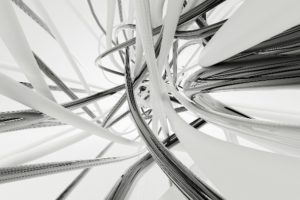Male Reconstructive Microsurgery (Azoospermia) in Beverly Hills, CA
 One of Dr. Paul Turek’s deep interests is microsurgical “rebuilding” of the male reproductive tract when it is blocked or obstructed, in order to treat azoospermia or sterility. The initial evaluation of these cases involves confirming that normal sperm production exists through a testis biopsy or sperm mapping™.
One of Dr. Paul Turek’s deep interests is microsurgical “rebuilding” of the male reproductive tract when it is blocked or obstructed, in order to treat azoospermia or sterility. The initial evaluation of these cases involves confirming that normal sperm production exists through a testis biopsy or sperm mapping™.
An alternative to rebuilding the male reproductive tract is in vitro fertilization (IVF) and ICSI along with sperm retrieval. But many couples would like to avoid IVF, preferring instead to conceive in the privacy of their own homes. Reconstructive procedures offered by Dr. Turek allow for this possibility and are more affordable than assisted reproduction in cases of blocked reproductive tracts.
The microsurgical techniques used in reconstructive surgery are similar to those applied in vasectomy reversal surgery, varicocele repair procedures and other surgeries. Microsurgical reconstruction is the “ultimate” procedure in urologic microsurgery because, unlike with vasectomy, where the location of the blockage is known, the blockages in cases of obstruction need to be found first and then creatively fixed or bypassed using all of the tools of the trade. Very few microsurgeons dare to attempt these cases as they are the most technically challenging in all of urology. Dr. Turek has published his outcomes in such cases using the latest advances in microsurgical techniques.
Unexplained Obstruction
In many cases of obstruction, the culprit is a blockage resembling the one created through a vasectomy. But no obvious causes are found in the evaluation of these men. In these cases blockages are typically in the vas deferens or epididymis, and vasovasostomy (reattaching the severed ends of the vas deferens to each other) or epididymovasostomy (connecting the vas deferens to the epididymis) are used to “rebuild” the system.
Obstruction due to Genetics
Young Syndrome and congenital absence of the vas deferens are genetic causes of sterility caused by blockage. In most of these cases, the blockage exists in the epididymis and requires epididymovasostomy. Many cases of absence vas deferens involve only a single side and the opposite side may be reconstructable.
Obstruction due to Infection
Past infections in the urinary tract, generally bacterial in nature and occurring in childhood or adulthood, can lead to obstruction from scar tissue after healing. Tuberculosis and sexually transmitted disease can similarly “block” the reproductive tract and prevent sperm from entering the ejaculate. Microsurgical reconstruction procedures can undo or bypass these blockages and restore sperm in the ejaculate.
Obstruction due to Ejaculatory Duct Blockages
 Dr. Turek’s research over the last 25 years has shown that many cases of azoospermia associated with low-volume ejaculation can be due to blockages in the ejaculatory ducts near the prostate. These blockages are diagnosed by transrectal ultrasound and confirmed by “dynamic” testing of the system prior to surgically opening the ducts near the prostate. In some cases, a blockage in the ejaculatory ducts over time can lead to a second blockage in the epididymis near the testicle. To restore ejaculatory volume and sperm to the ejaculate, fixing the ejaculatory duct blockage and the epididymal blockage are required. These procedures are routinely performed by Dr. Turek.
Dr. Turek’s research over the last 25 years has shown that many cases of azoospermia associated with low-volume ejaculation can be due to blockages in the ejaculatory ducts near the prostate. These blockages are diagnosed by transrectal ultrasound and confirmed by “dynamic” testing of the system prior to surgically opening the ducts near the prostate. In some cases, a blockage in the ejaculatory ducts over time can lead to a second blockage in the epididymis near the testicle. To restore ejaculatory volume and sperm to the ejaculate, fixing the ejaculatory duct blockage and the epididymal blockage are required. These procedures are routinely performed by Dr. Turek.
Obstructions due to Hernia Surgery, Trauma or Injury
Injury to the vas deferens can occur anywhere along its length in the scrotum, groin and pelvic areas. Scrotal injuries are typically repairable with vasovasostomy or epididymovasostomy. Mesh hernia repairs in the groin region can result in vas deferens obstruction that is typically treatable with the same microsurgical technique used for vasovasostomy.
Dr. Turek’s Published Results
 Dr. Turek performed a retrospective case-controlled study of a consecutive series of men undergoing epididymovasostomy for unexplained epididymal obstruction. A total of 35 men underwent exploration and epididymovasostomy procedures by using a standard method of connecting the severed vas deferens to the epididymis. In mucosa-to-mucosa epididymovasostomy, an epididymal tubule is connected to the severed end of the vas deferens with two layers of sutures. In a recent innovation called the invagination epididymovasostomy, several sutures are placed near the opening of the epididymal tubule and the tubule “invaginates” (or folds toward the inside of) the vas deferens. The mean patient age, rate of patency (regaining sperm flow) and time to patency are outlined in the table. The invagination cohort demonstrated a trend toward higher patency rates, and significantly shorter time to patency (P < 0.05) compared to the mucosa-to-mucosa cohort.
Dr. Turek performed a retrospective case-controlled study of a consecutive series of men undergoing epididymovasostomy for unexplained epididymal obstruction. A total of 35 men underwent exploration and epididymovasostomy procedures by using a standard method of connecting the severed vas deferens to the epididymis. In mucosa-to-mucosa epididymovasostomy, an epididymal tubule is connected to the severed end of the vas deferens with two layers of sutures. In a recent innovation called the invagination epididymovasostomy, several sutures are placed near the opening of the epididymal tubule and the tubule “invaginates” (or folds toward the inside of) the vas deferens. The mean patient age, rate of patency (regaining sperm flow) and time to patency are outlined in the table. The invagination cohort demonstrated a trend toward higher patency rates, and significantly shorter time to patency (P < 0.05) compared to the mucosa-to-mucosa cohort.
| Techniques | Patients | Mean Age (years) | Patency Rate (%) | Mean Time to Patency (weeks) | Follow-Up Range (months) |
|---|---|---|---|---|---|
| Invagination | 25 | 37 | 19/25 (76%) | 13 | 4-24 |
| Mucosa-to-mucosa | 10 | 38 | 6/10 (60%) | 20 | 4-15 |
 This suggests to Dr. Turek that invagination epididymovasostomy may provide improved patency rates compared to standard epididymovasostomy in idiopathic obstructive azoospermia. In addition, the time it takes sperm to reappear in the ejaculate appears to be shorter with the invagination method.
This suggests to Dr. Turek that invagination epididymovasostomy may provide improved patency rates compared to standard epididymovasostomy in idiopathic obstructive azoospermia. In addition, the time it takes sperm to reappear in the ejaculate appears to be shorter with the invagination method.
Glossary: Procedures and Treatments Associated with Reconstructive Surgery
Sperm mapping™, also known as FNA Mapping or Testicular Mapping, is a minimally invasive technique to find sperm in “hidden” areas of the testes that may have gone unnoticed during conventional or microdissection testicular sperm extraction procedures. It can also identify whether or not sperm production is normal and whether the system is blocked.
Vasovasostomy is a microsurgical method that reconnects the vas deferens after vasectomy and restores the flow of sperm. During vasovasostomy, the separated ends of the vas deferens are surgically reconnected.
Epididymovasostomy is another microsurgical method used in vasectomy reversal, during which the vas deferens is surgically connected to the epididymis to recreate a passageway for sperm.
Vasotomy is a microscopic incision made in the vas deferens.
Vasography is an X-ray of the vas deferens, used to help look for a blockage, leakage or other problem.
Sperm retrieval removes sperm directly from the organs within the male reproductive tract (e.g., the vas deferens, epididymis, testicles) for use in achieving pregnancy with assisted reproductive technology.
Testis sperm aspiration (TESA) retrieves sperm from the testicles with needle aspiration. The sperm is used with IVF and intracytoplasmic sperm injection (ICSI) to achieve pregnancy.
Testis sperm extraction (TESE) retrieves sperm by either nonsurgical or incisional biopsy to use with assisted reproductive technology.
Epididymal sperm aspiration retrieves sperm from the epididymis. In microscopic epididymal sperm aspiration (MESA), a microscope is used to help find sperm in the epididymal tubules. In percutaneous epididymal sperm aspiration (PESA), sperm are aspirated through the skin blindly.
Vasal sperm aspiration retrieves sperm from the vas deferens to be used with intrauterine insemination (IUI) to achieve pregnancy.
Electroejaculation is a technique used for men who are unable to provide an ejaculate. The spinal reflex that controls ejaculation is electrically stimulated, and the ejaculated sperm is collected and used with IUI or IVF.
Penile vibratory stimulation (PVS) involves placing a high frequency, high amplitude vibrator on the bottom tip of the penis for several minutes to induce ejaculation.
Bladder harvest of sperm can be used for men with retrograde ejaculation, when the ejaculate or semen courses backward into the bladder. Sperm from the bladder can be harvested to use for assisted reproduction.
Microscopic varicocelectomy offers the highest success rates with the lowest complication rates for repairing varicocele. Through a small incision in the scrotum and with the assistance of a microscope, abnormal veins feeding the varicocele are identified and tied off.

Sperm freezing or sperm banking stores sperm until needed for assisted reproduction.
Semen analysis is the methodical evaluation of a semen sample. The health and viability of the man’s sperm are analyzed. A well-performed semen analysis can usually suggest a diagnosis or help inform the direction of treatment.
Testicular biopsy involves taking a small piece of tissue from the testis and examining it to look for sperm production.
Hormone supplement/replacement therapy is designed to normalize testosterone levels to improve mood, energy, libido, cognition and overall quality of life.
Testicular implants recreate the normal look and feel of one or both testicles.
Surgical male fertility treatments address problems affecting fertility so men can go on to have biological children. Procedures include varicocele repair, ejaculatory duct resection and vasectomy reversal.
Vasectomy reversals can fail due to female fertility problems, abnormal sperm quality before the vasectomy, scar tissue at the site where the vas deferens was reconnected, an epididymal blowout or other problems with the epididymis. Treatment depends on the nature of the problem.
Scrotal ultrasound uses sound waves to produce images of the scrotum that help in diagnosis of problems such as varicocele.
Transrectal ultrasound (TRUS) uses sound waves to produce images of the prostate gland and look for problems like dilated seminal vesicles, cysts blocking the ejaculatory ducts or calcifications in the ducts.
Transurethral resection of the ejaculatory ducts (TURED) is a minimally invasive treatment for ejaculatory duct obstruction. It opens the ducts to allow for the normal flow of ejaculate.
Idiopathic obstructive azoospermia is a lack of sperm in the ejaculate due to a blockage in the reproductive tract, the cause of which is unexplained. The testicles produce sperm but the blockage prevents the sperm from reaching the ejaculate.
Spermatocelectomy removes a spermatocele, or cyst that forms next to the testicles.
Contact The Turek Clinic
For more information about reconstructive surgery or related treatments, please contact The Turek Clinic today.









